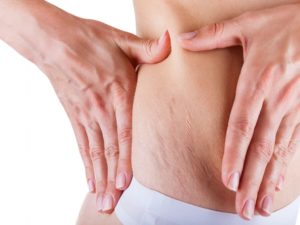As someone with scoliosis, the last thing on your mind is probably engaging in activities that will put a strain on your back. Looking at your spine’s condition and when you found out about it, you cemented it in your head that you might not be as physically active as other people without your condition. You rely only on treatments such as chiropractic care and medications.
However, this should be a mindset you should pry away from yourself. Scoliosis is not a condition that will hinder you from being a normal person. We are here to tell you that you can be just like everyone else—you can also be physically active.
A personal trainer and corrective exercise specialist in California, Rocky Snyder, suggested exercises suitable for people with scoliosis. He also stated that there are stretching exercises that can help you improve your muscle’s dexterity.
How will your physical activity differ?
According to the Californian trainer and specialist, the only difference between people with and without scoliosis when it comes to doing exercise activities is that those without scoliosis can move their bodies side to side.
An example of this is when a person without scoliosis walks. Their spine bends at a natural angle and rotates from left to right. After, the spin will revert to the center. As for individuals with scoliosis, the spine has difficulty moving from left to right due to the curvature of their spine.
This means that you will have a hard time doing exercises that require you to mimic the actions of walking.
Here are two stretching exercises you can do to mitigate some of the imbalances brought by scoliosis:
1. Bending your spine further
Now, this may sound like a terrible idea because you will be trying to follow the curve of your spine. But in reality, driving your body towards the direction of your spine’s curve to stretch it will make the muscle you stretch pull back and shorten slightly.
As scoliosis is a condition that affects your body’s central nervous system’s ability to make muscles contract and shorten, driving your body towards the direction of the curve will put them under enough pressure to push them into a shortened state.
Doing this stretching exercise will help your scoliosis-affected muscles gain the traction they need to not remain unmoving as an effect of scoliosis.
2. Bending the opposite site
This stretching exercise is the exact opposite of the first one. If your spine’s curve is to the left, make a movement directing to the right and vice versa. According to Snyder, this method does not work as well as the first one. However, it is still worth trying to see if this will provide any benefit.
Scoliosis prevents affected muscles from gaining the movement they need to remain active to be healthy.
What are some exercises geared toward people with scoliosis?

We have mentioned before that even with scoliosis, you can still become active physically. As exercise is an optimal key to good overall health, you still need it to prevent your scoliosis from getting worse and to help other parts of your body remain in excellent condition.
1. Step-down and reach with one arm
To do this, you have to step higher with the leg that is longer whenever you are on your back. While doing this, the other leg should remain in a lower position. Picture stepping a step higher with only one leg.
As you switch between your two legs, use the arm on the “shorter leg” side and raise it as high as you can. Sets of two to three with five to 10 reps on both sides is an effective method.
2. Upward and downward dog
While in a prone plank position or similar planking with your back facing the floor, stretch your arms out straight and push your hips back and up as far as you can from the floor. Hold the position for two seconds and carefully lower your hips back down to the base.
To maximize effectiveness, reach as far as you can until you feel discomfort or pain in your back. Performing this for two to three reps with five to 10 reps each is a good method.
3. Split with arm reach
Almost similar to the step-down and reach with one arm, step forward with the “longer leg” at a slightly bigger distance. When stepping, keep your upper body as straight as you can.
After getting into position, shift your weight back and forth your legs and allow your “longer leg” knee to bend forward when you put your weight there.
When shifting your weight forward, raise the arm on the opposite side of the “longer leg” as high as possible. After, reach for the other arm with your palms up. This will push your upper body and spine to turn toward the side of the “longer leg.” Doing this for two to three sets with five to 10 reps is just the right amount.
When doing these exercises, it is important to note that you should probably get a professional to guide you when you feel discomfort in your back. The last thing you want to happen is to worsen your condition by doing the wrong types of exercise.
If you found that putting pressure on your condition is not a good option, you can opt for other relief types.














